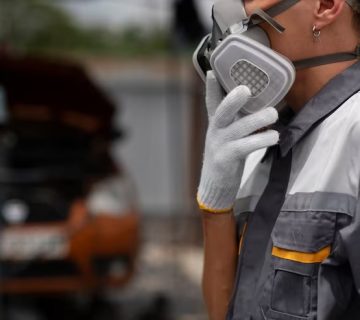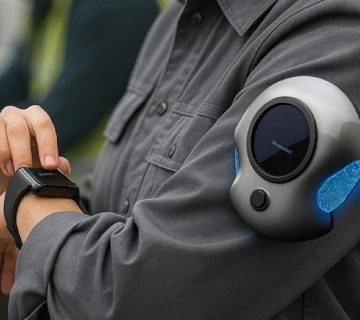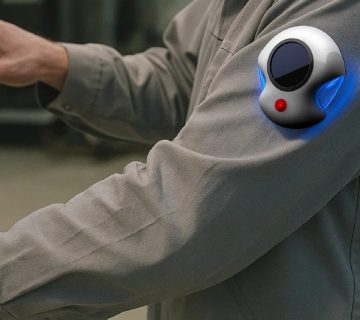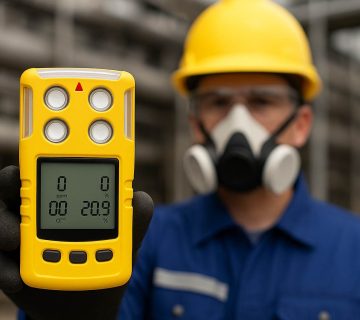From industrial, medical or residential environments, the existence of these toxic gases in the atmosphere is nothing more than a huge peril for individuals’ health, safety of operations and sustainability of the environment. These gases tend to be colorless, tasteless and beyond the reach of human senses thus making them the most dangerous. Advances in gas detection devices have been rapid to safeguard against these threats starting as a single detector technology that has a full array of solutions which are much more than basic sensing into modern technologies. Today they can deliver real-time data, health information alerts, remote communication and a lot more with minimum exposure related incidences.
Recent years have witnessed an increase in the demand for fast and precisely gas detection technology. Grand View Research, the gas detection equipment market in North America stood at USD 1.10 billion in 2023 and at a compound annual growth rate (CAGR) of 10.1% during the forecast period from 2024 through 2030. Industrialization growth, enforcement of environmental & workplace safety norms and advents of higher accurate sensor technologies with inbuilt precision, portability and usability are some of the factors driving this expansion.
Gas Detection Equipment
Gas detection equipment refers to the suite of tools and devices designed to monitor, identify, and measure the presence of toxic, flammable, or oxygen-depleting gases in the surrounding environment. These systems are vital in industrial sectors such as oil and gas, mining, manufacturing, chemical processing, and public utilities, where exposure to even low levels of hazardous gases can lead to fatal accidents or chronic health issues. In addition to occupational applications, the use of gas detectors has become increasingly relevant in urban environments, where pollution, building emissions, and faulty ventilation systems present hidden risks to everyday life.
There are a few kinds of classical gas detection devices. Although fixed detection systems are fixed and installed in locations with high risks to provide continuous monitoring, they can be only used at that location where they are placed. While portable handheld detectors are adaptable and do not need to be tethered to a workstation, this means they can disrupt workflow and don’t work well in fast changing environments. Wearable gas detection tools take the latest generation with wearable gadgets for hands-free supervision and custom defense. Such smart devices can not only be integrated with clothes or Personal Protective Equipment (PPE) worn by workers in mobile, as well as confined spaces.
Gas Detection Brassard
The gas detection brassard is a specific category of wearable detection equipment designed to be worn around the upper arm. Its purpose is to offer real-time gas monitoring in environments where mobility is essential and manual operation of detection tools is impractical or dangerous. These brassards are especially valuable in sectors like tunnel excavation, chemical spill response, and factory maintenance, where users are constantly on the move and need to remain alert without distraction.
Brassards, for the most part, have basic sensors that measure one or multiple gases and you get alerts visually or acoustically. Though highly convenient and portable, they can be very technology limited. Very often they fall short on health monitoring features, data connectivity and customizability needed in industrial computers for complex environments. Also, calibration and maintenance have to be done manually further magnifying the risk of sensor drift, false readings on an ever-escalating curve.
Toxic Alert addresses these limitations by advancing the concept of wearable detection far beyond the capabilities of a standard brassard. Its design is integrated into the clothing itself, eliminating the need for external straps or cumbersome attachments. More importantly, it adds health monitoring sensors that track the user’s vital signs in real-time, making it ideal not just for industrial workers but also for individuals with underlying health conditions such as respiratory diseases or heart issues. This level of personalization is not found in typical gas detection brassards.
Gas Detection Device Calibration
No matter how sophisticated a gas detection device is, it will be ineffective unless it is accurately calibrated. Calibration is the process of adjusting a device’s sensors to align with a known concentration of a target gas. Over time, due to environmental exposure, sensor degradation, or contamination, the readings from a gas detector can deviate from the actual levels present, leading to either false alarms or dangerous underreporting.
For instance, a mis-calibrated carbon monoxide detector may fail to register harmful concentrations of CO, placing the user at severe risk. Similarly, sensors exposed to high humidity or chemical interference can lose accuracy without the operator being aware of it. For this reason, regulatory bodies such as the Canadian Standards Association (CSA) and Underwriters Laboratories (UL) mandate routine calibration of all gas detection devices used in industrial or commercial environments.
Recommended calibration interval usually ranging from 30 to 180 days in between, that can vary for different sensor types, use cases and environmental factors. High-risk environments can need weekly testing. Toxic Alert satisfies this requirement through automated calibration alarm, so you don’t have to worry about your device staying calibrated day after calendar…it maintains itself according to schedule. It provides cloud-based calibration logging that eases the regulatory compliance and audit readiness of companies bound by national safety standards.
What Gases Does a Gas Monitor Detect?
Gas monitors are engineered to detect a wide variety of hazardous gases, each posing unique risks. The scope of detection depends on the device’s sensors and software capabilities. Common categories include toxic gases, combustible gases, oxygen concentration levels, and volatile organic compounds (VOCs). The health risks associated with these gases vary from acute poisoning to long-term organ damage or respiratory complications.
A comprehensive gas monitor such as Toxic Alert is typically equipped to detect the following:
| Gas Type | Primary Risk | Typical Exposure Limit (TWA – 8 hrs) | Example Application |
| Carbon Monoxide (CO) | Toxic, colorless, odorless gas | 50 ppm | Vehicle maintenance shops, furnaces |
| Hydrogen Sulfide (H₂S) | Highly toxic and flammable | 10 ppm | Oil & gas drilling, wastewater plants |
| Methane (CH₄) | Explosive when mixed with air | 5% LEL (Lower Explosive Limit) | Landfills, gas pipelines |
| Oxygen (O₂) | Deficiency or enrichment risk | Safe range: 19.5%–23.5% | Confined space entry, medical labs |
| VOCs | Carcinogenic and irritant gases | Depends on specific chemical (e.g., benzene = 0.5 ppm) | Laboratories, manufacturing plants |
Toxic Alert’s modular design allows users to configure the device to detect the gases most relevant to their environment. A factory safety officer can program the sensors to monitor methane and hydrogen sulfide, while an urban user might opt for carbon monoxide and VOC detection. This customizability, combined with real-time health parameter tracking, makes Toxic Alert unique in a market saturated with one-size-fits-all solutions.
Why Toxic Alert is the Leading Gas Detection Gadget
In terms of safety, usability and innovation compared with traditional gas detection methods around the world (fixed sensors, handheld monitors and wearable brassards), Toxic Alert stands out. Toxic Alert clearly is the way to go. The hardware design ethos combines gas monitoring, air quality sensing and biometric tracking into a lightweight wearable that blends unobtrusively into daily life or work attire.
Unlike standard devices that serve only a detection function, Toxic Alert acts as a comprehensive safety ecosystem, continuously analyzing both external and internal variables. It not only alerts the user to hazardous gas levels but also evaluates their oxygen saturation, heart rate, and physical movement, which can be critical in situations where toxic exposure affects consciousness or respiration. Its radio communication system allows data and alerts to be quickly sent to supervisors, emergency teams or medical professionals. The item is also governed by Canadian safety testing (CSA, UL and Innovation, Science and Economic Development Canada as well as ISED) thus it can be used by professionals operating in among the most vigilant sectors.








No comment